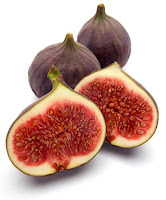
It has been a history since Italians have been consuming figs for a incredibly long time -- figs, in concert with cheese, bread, and olives, were amongst the fastener foods of the Roman Legions -- and numerous of the émigré who came to the Americas from the South, wherever they grow exceedingly well, sowed fig trees where they matured, yielding the bounty in the summer and covering the trees in the winter if it got cold. Certainly, for loads of a garden wasn't quite a garden except it had a fig tree.
Currently, most of us have to make do with what we can find in the markets. Opting out for fresh figs are painless, although one caveat does apply: They should come from where it's hot. South Italy is conspicuously hotter than Tuscany in the summer, and the figs Elisabetta and I harvested from the trees external the house we rented in Santa Maria di Leuca (on the very heel of the boot) were more affluent and more succulent than everything we have ever had in Tuscany. Inveterating to selecting, figs range from pale green though deeper blackish burgundy red, and should appear firm, with a rather voluptuous turgid roundness to them. There should be no whitish sap up-and-coming from the stems, though a drop or two of nectar from the gloominess at the bottom of the fig is OK, and trivial splits in the skin (not too deep) are also adequate. If they're overripe they become very sugary, but can also begin to ferment; some people like this amalgamation of flavors while others do not.
For the reason that they mess up quite effortlessly you should sketch on using your figs the day you buy them. Though allocating them at the end of the meal perceptibly comes to mind -- they are, after all, fruit -- they also go very agreeably with sparsely sliced prosciutto as an antipasto; I have observed a French way that involves wrapping the figs in prosciutto and grilling them, but Italians purely serve the cut figs with the prosciutto, much the way they serve melons with prosciutto. If the figs are good and the prosciutto their alike, the blend is perfect as it is.

